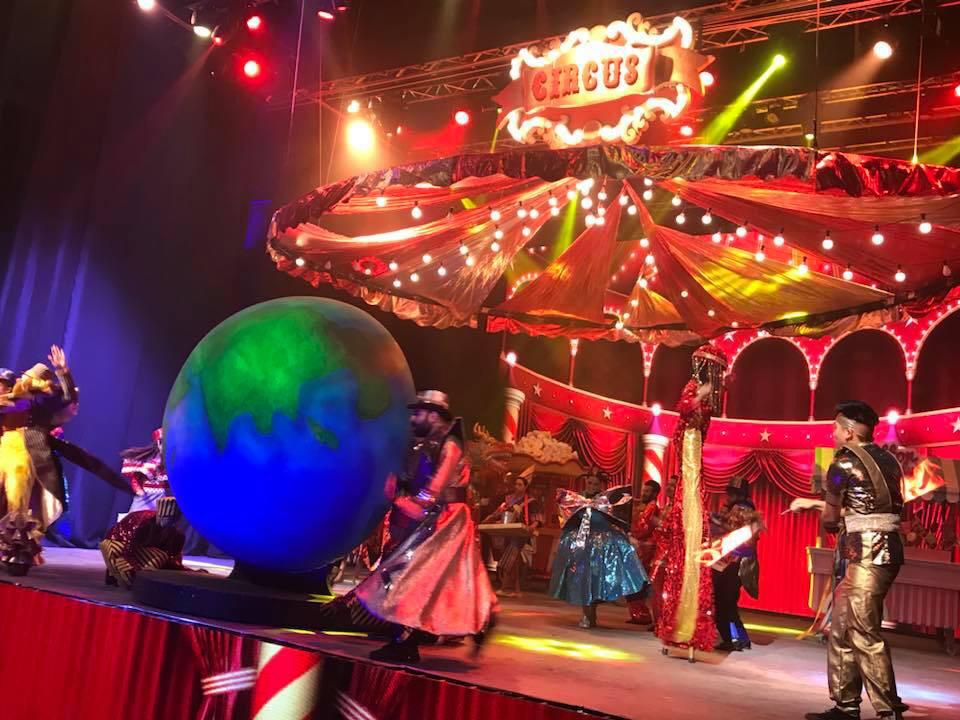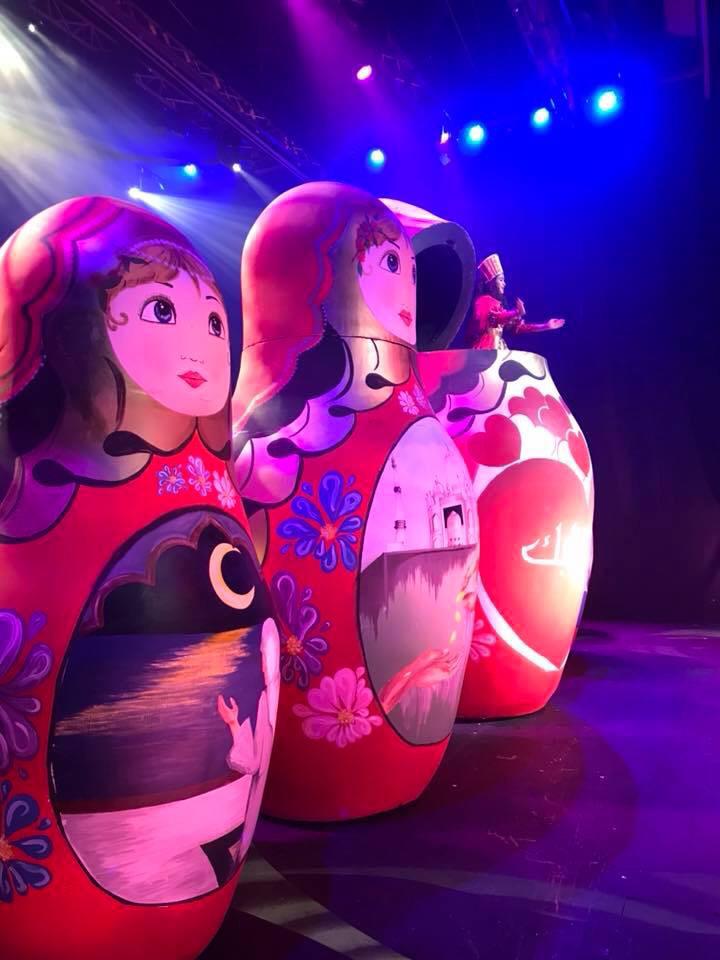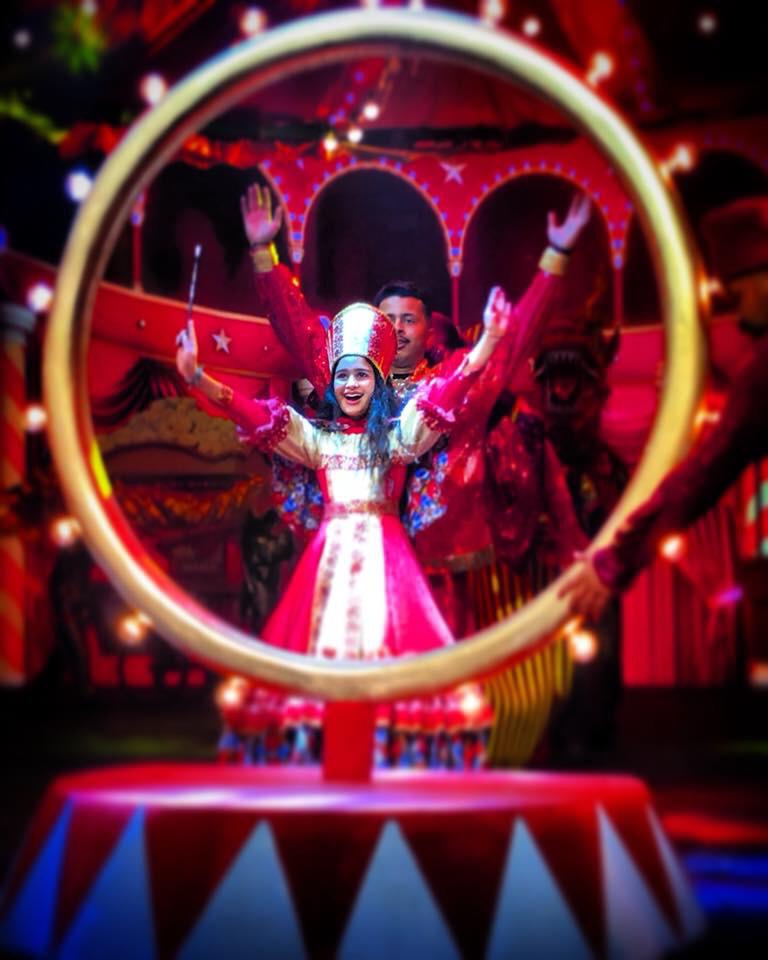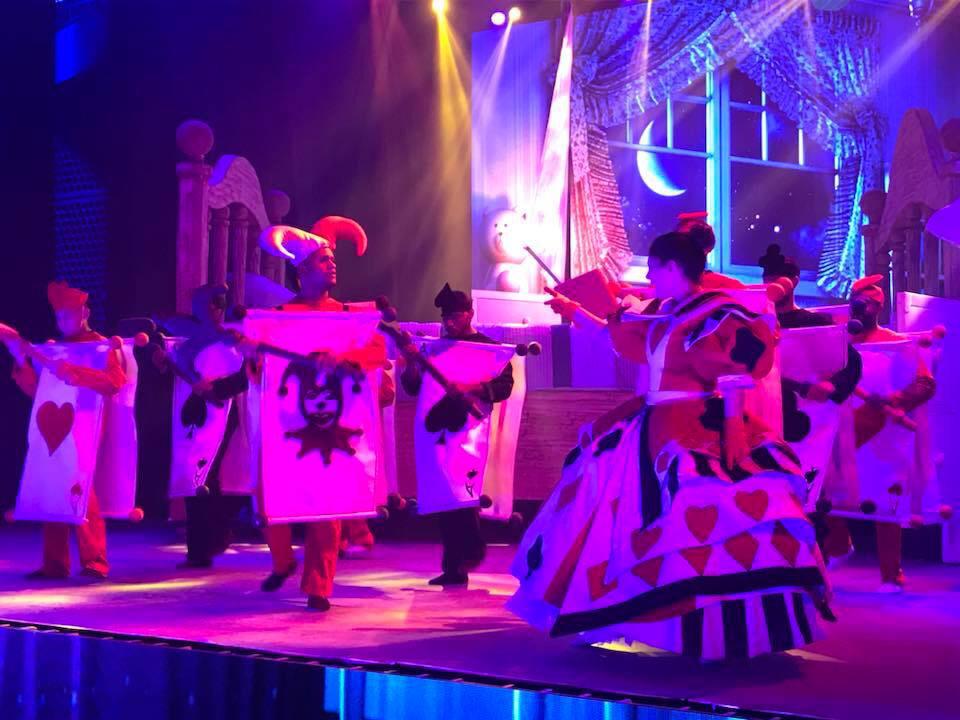Luke Bonner’s Reality Shows
Posted on September 27, 2018
Photo: Michele Abdo
As a lighting designer who’s done WYSIWYG modeling and video mapping for major global events like the Formula 1 Grand Prix Concert in Abu Dhabi, Luke Bonner is accustomed to rolling out massive levels of technology. When it comes to theatrical productions, however, Bonner takes a step back, preferring to minimize virtual set technologies like projection videos and LED walls in favor of actual physical scenic pieces.
“It is the very ‘reality’ of these physical objects that allows them to impart a greater sense of depth and texture to a theatrical production by responding to light in ways that their virtual counterparts simply cannot match,” says the Australian-born designer. The powerful synergy between physical set pieces and dynamic, colorful lighting was clearly demonstrated in a recent theatrical production of “Made in Zain,” which was lit by Bonner. (Photos of the play appear with this article.)
Bonner, who was part of the lighting team at Motiongate that won the 2018 Thea Award for Outstanding Achievement, has amassed an impressive portfolio that includes designs for the DreamWorks Animation Zone in Dubai, as well as an array of theatrical, architectural, corporate and touring projects. Taking time from his busy schedule, he spoke to us about the value of remaining real with scenic elements.

Photo: Michele Abdo
Despite the trend to create virtual sets with projections, actual physical scenic elements are often your choice in theatrical productions. What advantage do you see physical sets offering?
“They have the advantage of being real objects, with form and shape in three dimensions that have a look about them that projection or LED walls / screens just don’t do. They respond naturally to the light they receive; its color and its direction. Physical scenic elements create shadow. They can also be interactive, since performers can climb on or around them. This can’t be done with virtual sets, only with physical objects.”
Physical props seem to fit very nicely into a show like Made in Zain, which has a fanciful, whimsical feel, but what about in a show that is more edgy? Do you think a virtual set would be more appropriate in those cases?
“I guess an edgier show might be thought of as faster, perhaps with less physical stage space available. This kind of show might not benefit from physical interaction with scenic elements. It might require unlimited visual backgrounds that enhance the lighting to create the desired ‘looks’. I’d say then that in those cases, yes – a virtual set would be more appropriate.”
What are your thoughts of mixing virtual and physical scenic elements?
“Some shows may have a lot of props and only need a small virtual component. Other shows are mostly virtual with a small component of props. Definitely there is a place for mixing both virtual and physical elements on a set. Of course, it depends on the type of show. The Made in Zain show had both props and used LED screens as part of the overall set. The props allowed performer interaction and gave more of an authentic look to the production, while the LED screens worked as virtual backdrops to finish each look.”
From a lighting design standpoint, what are the things you look at first when determining how you are going to light a scenic element?
“It depends on what the scenic elements are going to be doing throughout their life on stage. What colors work best on them? How much light do they need? Which direction should this light be coming from? When are these scenic elements to be revealed, and what impact does this have on the story? All of these factors need to be considered when determining how to light a scenic element.”

Photo: Michele Abdo
Do you prefer to light scenic pieces with color or white light?
“Usually with color — which can also include versions of white — or slightly different types of color to match the finish of the material. The color I select would also depend on what else is happening onstage.”
What are your thoughts on lighting scenic pieces from the inside?
“When done correctly, it can be an additional way to complement scenic pieces.
For example, using a source of light inside a giant furnace to simulate a fire raging inside could further emphasize the look.”
Do you change the level or color of light on a scenic piece to give it a dynamic element of movement?
“If there is a reason to do so. Perhaps there is song or dance and the music is upbeat and the idea may be to animate or liven things up. Or perhaps even use strobe or flashing lights to create a sense of urgency. In cases like those, I would most definitely use lighting to add a dynamic element to a scenic piece.”
In some shows, such as Made in Zain, it seems that costumes themselves are becoming almost like moving scenic pieces. Do you feel this is so? What are your thoughts on that?
“I think they become a type of moving scenic piece in that they’re now part of the overall look on stage, giving a slightly imperfect human feel. In these cases, it’s crucial to achieve a balance between lighting costumes in colors and faces clearly enough to be seen.”

Photo: Michele Abdo
Do you think we’ll see a wider variety of physical scenic pieces and more unusual ones now that CAD technology has become more accessible?
“CAD technology will certainly help speed things up and consolidate ideas. In the case of a stage show, it will come down to the story, revealing just how relevant the physical scenic pieces are. In the case of a concert or dance party, having unusual set architecture would maybe depend on the artist or music type.”
How does lighting a physical scenic element compare to lighting an actor?
“It’s similar, except in terms of contrast favoring the actor. The actors revealed in light can change more often during the show as a result of different colors, different lights and lighting angles, intensities, etc.”
Any advice for lighting designers on how to communicate with scenic designers?
“Get involved as early as you possibly can in the conversations about scenic. This will make it easier to see what the scenic designer wants to do. In turn, this will help the two of you see how it can all work together on stage. Having this conversation will help you better understand if perhaps only by a few slight adjustments in the lighting design can help bring out the best in the scenic elements. Never be hesitant to express your views from the lighting perspective. It is always a collaboration between lighting and scenic – not a compromise!”